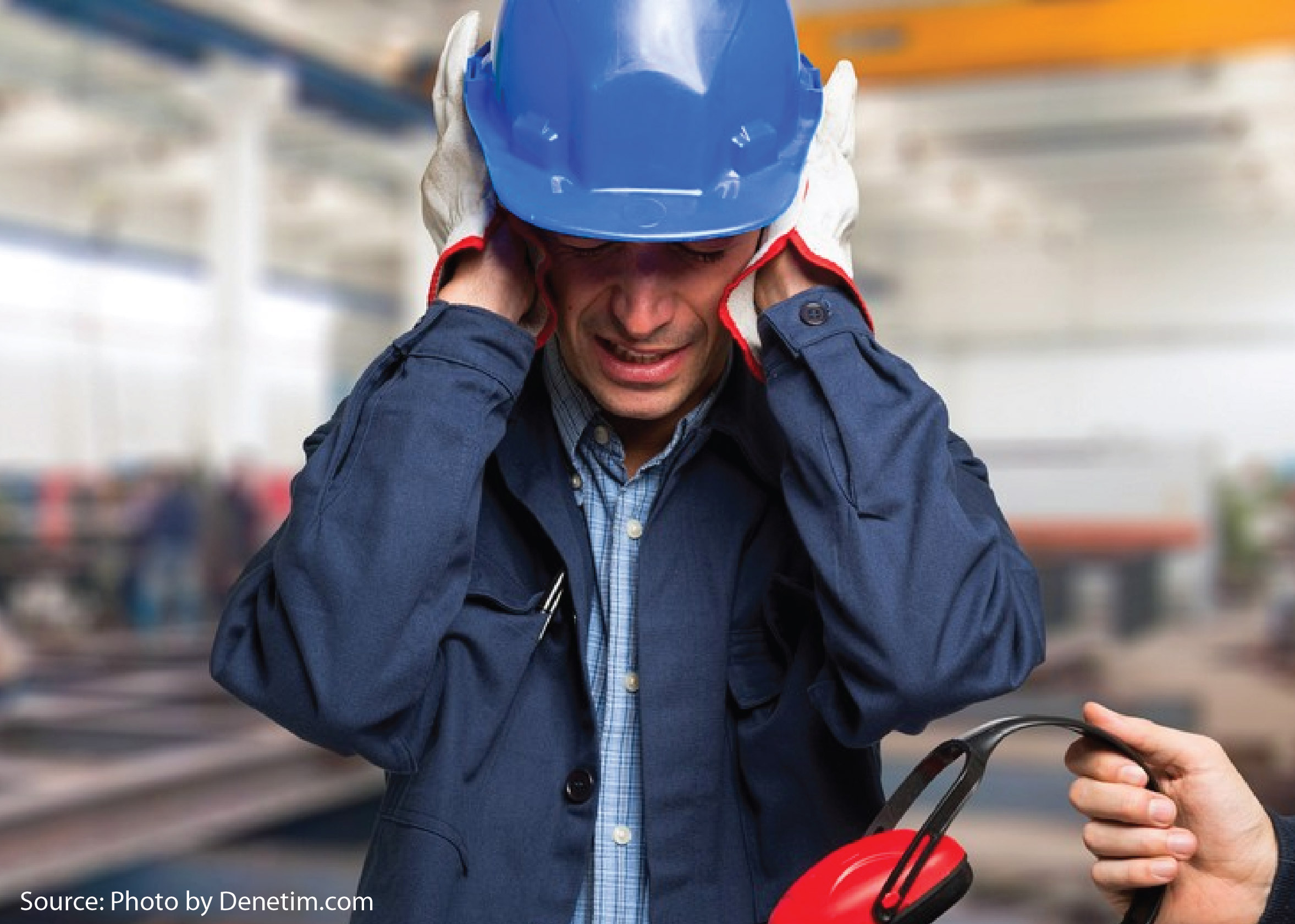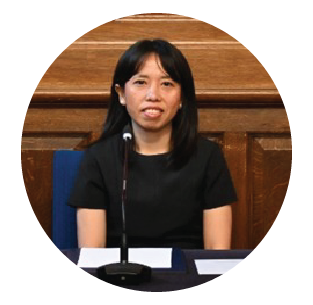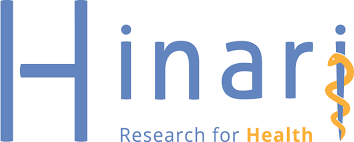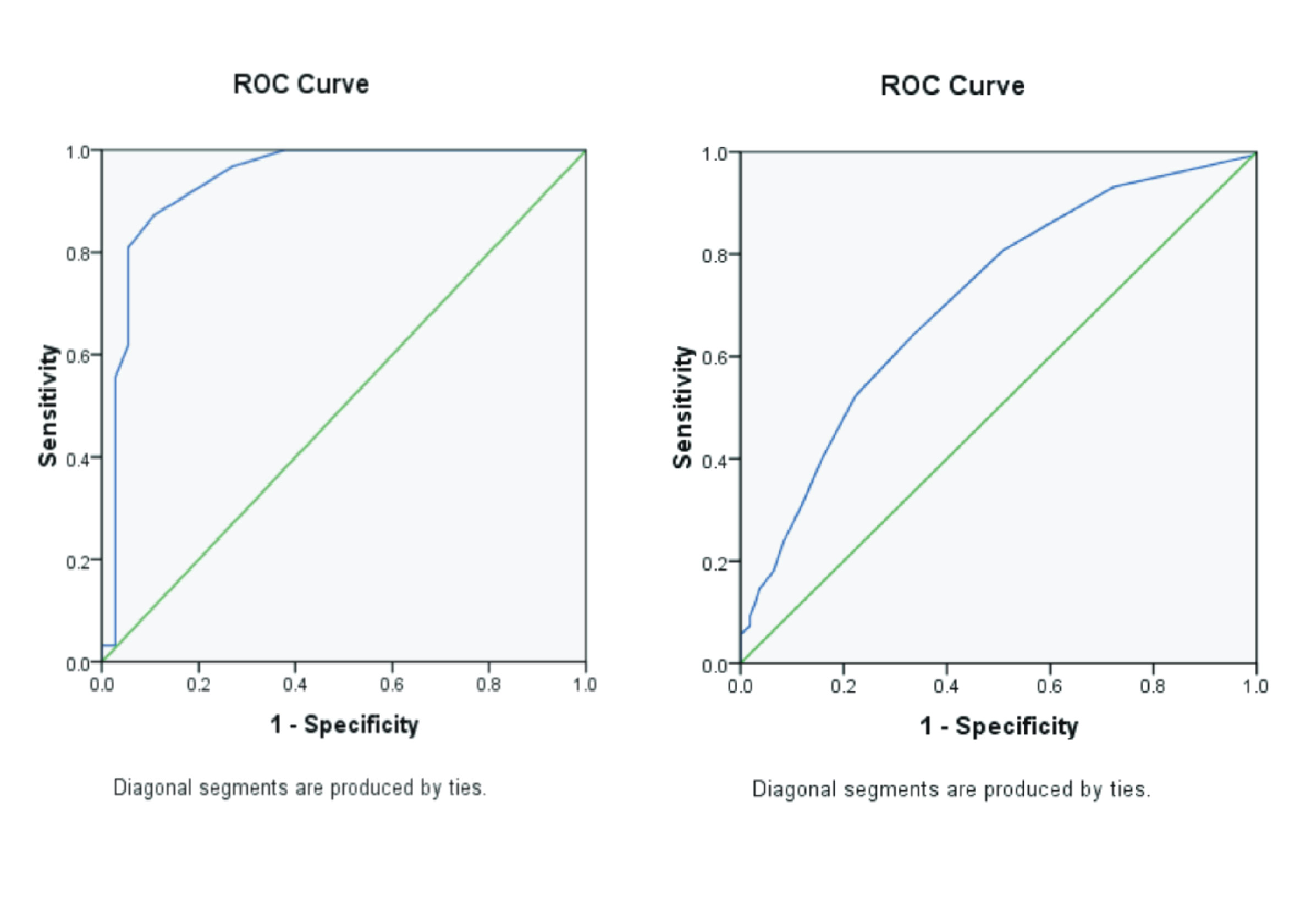DIFFERENCES IN WORKERS' BLOOD PRESSURE DUE TO NOISE IN THE MANUFACTURING INDUSTRY IN EAST JAVA, INDONESIA

Background: Continuous noise exposure can cause an increase in blood pressure and work-related stress in the rotary production area of PT APB Manufacturing Industry in East Java Province, Indonesia. Purpose: This research aims to analyze the effect of noise intensity on blood pressure before and after work among employees in the rotary production area of the manufacturing industry in East Java Province, Indonesia. Method: This research employed an analytic observational study with a cross-sectional design. The sample, obtained through cluster random sampling, consisted of 49 people. Data were collected by measuring noise intensity and monitoring blood pressure before and after work. A Paired Sample T-test was conducted to assess differences in workers' blood pressure before and after exposure to noise. Result: Significant differences were observed in both systolic (p-value = 0.000) and diastolic (p-value = 0.010) blood pressure before and after work. Conclusion: Increased blood pressure appears to be linked to noise levels in the workplace exceeding the threshold value. Consequently, there is a need for control efforts to overcome this issue.
Introduction
Processes in the manufacturing industry have generated 70% of noise exposure as an unwanted by product (Ismaila and Odusote, 2014(Ismaila & Odusote, 2014)). Factory workers are the first to face intense noise exposure and are at risk of its adverse effects. The duration of noise exposure for more than three years in workers is significantly associated with the occurrence of hearing loss with an odds ratio of 12.8 (Kamarudin et al., 2022(Kamarudin et al., 2022)). Another study on workers in China revealed a significant correlation between noise levels exceeding 80 dBA and the incidence of hypertension (Zhou et al., 2022(Zhou et al., 2022)).
Noise can serve as a typical stressor, leading to hyperactivity in the sympathetic autonomic nervous system and activation of the hypothalamic-pituitary-adrenal axis, both in the short and long term after exposure (Poulsen et al., 2018(Poulsen et al., 2018)). The impact of noise on workers' hearing encompasses both auditory and non-auditory disturbances. Auditory disorders include balance disorders, hearing loss, and permanent hearing impairment, while non-auditory disorders comprise elevated blood pressure, electrocardiographic abnormalities, psychological disorders, impaired work focus, diminished alertness, negative emotions, work inefficiency, disruption in body physiology, and behavioral disorders (Kompala et al., 2013(Kompala et al., 2013); Mukhlish et al., 2018(Mukhlish et al., 2018); Zhou et al., 2022(Zhou et al., 2022)).
There is a positive correlation between noise intensity and the incidence of hypertension among the workforce. This correlation arises from exposure to a noisy environment exceeding NAB > 85 dBA for 8 hours without the use ofEar Protection Equipment(EPE) (Hamdie et al., 2020(Hamdie et al., 2020)). In addition, there is a significant relationship between noise levels and work stress. As noise intensity increases, the level of work stress experienced by workers also rises. Conversely, when workers are exposed to low noise intensity, the experienced work stress is reduced (Candraditya, 2016(Candraditya, 2016)).
Based on preliminary observations conducted at the PT APB manufacturing industry in East Java Province, Indonesia, noise was identified emanating from the rotary production process. Upon entering the rotary production area for the first time, noticeable noise coming from the spun pile manufacturing machines was observed, causing disturbance to hearing and resulting in ringing in the ears. The test results obtained in the rotary production area recorded a noise level of 92.7 dBA, surpassing the NAB threshold of 85 dBA as per Minister of Manpower Regulation No. 5 of 2018(Manpower, 2018)concerning Occupational Safety and Health in the Work Environment. Unfortunately, the test result report document cannot be displayed due to confidentiality concerns for the company. In response to the issue, PT APB has carried out control measures by providing EPE, such as ear plugs to workers. However, based on interviews with several risk control workers regarding noise intensity exceeding theThreshold Value(TLV) even with the use of EPE, the effectiveness of the control measures appears suboptimal. Furthermore, interviews with several workers in the rotary production area revealed instances where employees frequently complained of headaches and occasional ringing in their ears.
The intensity of this noise can lead to an increase in blood pressure. Therefore, it is important to conduct further discussion regarding the effect of noise intensity on blood pressure, considering the level of work stress among workers in the rotary production area of the manufacturing industry at PT APB in East Java Province, Indonesia. The aim of this research is to analyze the effect of noise intensity on blood pressure before and after work among workers in the rotary production area of the manufacturing industry in East Java Province, Indonesia.
Material and Method
This research was an analytic observational type that looks for relationships between variables, namely by conducting an analysis of the data collected. This research has been ethically tested and received an ethical certificate from the Ethics Commission of the Faculty of Nursing, Universitas Airlangga No: 2804-KEPK/2023. Based on the implementation time approach, this research was a cross-sectional design. The population of this research was all workers in the manufacturing industry rotating production area in PT APB in East Java Province, Indonesia. The research was conducted during July 2022.
PT APB is a company engaged in making precast concrete. Spun piles or piles are one type of product produced by PT APB. Spun piles or piles are round and hollow in the middle. The spun pile production period started in August 2021 and finished in September 2022 with a production target of 70 rods per day. Spun pile production at PT APB was carried out in the rotary production area which is divided into eight areas, namelyHeading Cutting Caging(HCC) assembling setting, pouring, stressing, spinning, steaming, demolding, and finishing. This rotary production area is divided into two shifts with a total of 55 workers on the morning shift and 40 workers on the night shift. The working duration at PT APB is eight hours from Monday to Friday with a one-hour break starting at 08.00 – 17.00 WIB. Noise intensity measurements at PT APB are carried out every 6 months, precisely in June and December. The population of workers in this research amounted to 55 workers in the morning shift. This was because there were more morning shift workers than night shift workers. The sample size obtained from the calculation of the sample size was 49 people.
Noise
Akande, T., 2001. Awareness of Commercial Grinding Machine Operators in Ilorin to Noise Induced Hearing Loss. Fooyin Journal of Health Sciences Vol. 8(1), Pp. 28-31.
Albustomi, Y., W, D.A., 2017. Perbedaan Tekanan Darah Sistole dan Diastole Sebelum dan Setelah Kerja pada Pekerja yang Terpapar Bising di PT X. Journal of Public Health Research and Community Health Development Vol. 1(1), Pp. 22-29.
Arumdani, I.S., Setiani, O., Joko, T., Raharjo, M., Adi, S., 2022. Relationship of Noise Levels with Hypertension in Textile Workers in Semarang City. Jurnal Presipitasi : Media Komunikasi dan Pengembangan Teknik Lingkungan Vol. 19(3), Pp. 638-650.
Candraditya, R., 2016. Hubungan Tingkat Kebisingan dengan Stress Kerja pada Pekerja di PT Vale Indonesia (Skripsi). Universitas Airlangga.
Chahyadhi, B., Widjanarti, M.P., Ada’, Y.R., Suratna, F.S.N., Wijayanti, R., 2022. Noise Intensity, Blood Pressure, and Pulse Rate in Textile Industry Workers. Placentum: Jurnal Ilmiah Kesehatan dan Aplikasinya Vol.10(1), Pp. 73-80.
Chen, S., Ni, Y., Zhang, L., Kong, L., Lu, L., Yang, Z., Yang, L., Zhang, X., Zhu, Y., 2017. Noise Exposure in Occupational Setting Associated with Elevated Blood Pressure in China. BMC Public Health Vol. 17(1), Pp. 107.
Endi, D.R.T., Dwisetyo, B., Palup, M.R., Prasasti, N.R., Putri, C.C., Utomo, F.B., 2020. Panduan Kalibrasi Sound Level Meter Metode Coupler, SNSU PK.A-01:2020. Badan Standardisasi Nasional.
Hall, J.E., 2016. Guyton and Hall: Textbook of Medical Physiology Thirteenth Edition. 13. Elsevier, Philadelphia, PA.
Hamdie, S.A., Fauzan, A., Chandra, 2020. Hubungan Intensitas Kebisingan dan Lama Kerja dengan Kejadian Hipertensi pada Tenaga Kerja di PT. Kondang Buana Asri Tahun 2020, Pp. 1-7.
Indriyanti, L.H., Wangi, P.K., Simanjuntak, K., 2019. Hubungan Paparan Kebisingan terhadap Peningkatan Tekanan Darah pada Pekerja. Jurnal Kedokteran dan Kesehatan Vol. 15, Pp. 36.
Ismaila, O., Odusote, A., 2014. Noise Exposure as A Factor in The Increase of Blood Pressure of Workers in A Sack Manufacturing Industry. Beni-Suef University Journal of Basic and Applied Science, Pp. 1-6
Jaafar, N.I., Md Daud, M.K., Mohammad, I., Abd Rahman, N., 2017. Noise-Induced Hearing Loss in Grass-Trimming Workers. Egypt. Egyptian Journal of Ear, Nose, Throat and Allied Sciences Vol. 18, Pp. 227–229.
Kalantary, S., Dehghani, A., Yekaninejad, M.S., Omidi, L., Rahimzadeh, M., 2015. The Effects of Occupational Noise on Blood Pressure and Heart Rate of Workers in An Automotive Parts Industry. ARYA Atheroscler. Vol. 11(4), Pp. 215-219.
Kamarudin, N., Robinson, F., Saupin, S., Mohammad, A.H., Domingo, O., Hafizah, N., Salan, H., 2022. Hearing Loss among Vector Control Unit Workers In Bornean Malaysia : A Cross-Sectional Risk Factors Study. Malaysian Journal of Public Health Medicine. Vol. 22, Pp. 61-67.
Kompala, T., Shenoi, S.V., Friedland, G., 2013. Transmission of Tuberculosis in Resource-Limited Settings. Curr. HIV/AIDS Rep. Vol. 10(3), Pp. 264-272.
Mamat, S.N.S., Naim, F., 2020. Noise Exposure and Perceived Hearing Symptoms of Metal Fabrication Workers in Heating, Ventilating and Air Conditioning Manufacturing Industry. Malaysian Journal of Medicine and Health Sciences. Vol. 16 (Supl:1), Pp. 135-143.
Minister of Manpower, R.I., 2018. Minister of Manpower Regulation number 5 of 2018 con-cerning Work Environment Safety and Health, Peraturan Menteri Ketenagakerjaan Republik Indonesia No 5 Tahun 2018.
Muhyidin, M., Nasri, S.M., 2021. Analysis of Occupational Noise in Association with Blood Pressure among Workers at Geothermal Power Plant. Jurnal Presipitasi : Media Komunikasi dan Pengembangan Teknik Lingkungan. Vol. 18(3), Pp. 504-511.
Mukhlish, W.I.N., Sudarmanto, Y., Hasan, M., 2018. Pengaruh Kebisingan terhadap Tekanan Darah dan Nadi pada Pekerja Pabrik Kayu PT. Muroco Jember. Jurnal Kesehatan Lingkungan Indonesia Vol. 17(2), Pp. 112-118.
Non-communicable Disease Branch, 2023. Non-Communicable Diseases Watch.
Poulsen, A.H., Raaschou-Nielsen, O., Peña, A., Hahmann, A.N., Nordsborg, R.B., Ketzel, M., Brandt, J., Sørensen, M., 2018. Short-Term Nighttime Wind Turbine Noise and Cardiovascular Events: A Nationwide Case-Crossover Study from Denmark. Environment International Vol. 114, Pp. 160-166.
Rasdi, I., Zin, N., Norkhadijah, S., 2019. Factors of Job Satisfaction among Workers Exposed to Occupational Noise. Malays. Malaysian Journal of Medicine and Health Sciences Vol. 15(SP4), Pp. 2636-9346.
Rizkiawati, N.L., 2018. Hubungan Beban Kerja dan Intensitas Kebisingan terhadap Tekanan Darah pada Pekerja Bagian Hull Construction di PT Dok dan Perkapalan Surabaya (Skripsi). Universitas Airlangga.
Zamanian, Z., Rostami, R., Hasanzadeh, J., Hashemi, H., 2013. Investigation of The Effect of Occupational Noise Exposure on Blood Pressure and Heart Rate of Steel Industry Workers. Journal of Environmental and Public Health Vol. 19. Pp. 256060.
Zhou, B., Lan, Y., Bi, Y., Li, C., Zhang, X., Wu, X., 2022. Relationship Between Occupational Noise and Hypertension in Modern Enterprise Workers: A Case-Control Study. International Journal of Public Health Vol. 67, Pp. 1604997.
Copyright (c) 2025 Journal of Vocational Health Studies

This work is licensed under a Creative Commons Attribution-NonCommercial-ShareAlike 4.0 International License.
- The authors agree to transfer the transfer copyright of the article to the Journal of Vocational Health Studies (JVHS) effective if and when the paper is accepted for publication.
- Legal formal aspect of journal publication accessibility refers to Creative Commons Attribution-NonCommercial-ShareAlike (CC BY-NC-SA), implies that publication can be used for non-commercial purposes in its original form.
- Every publications (printed/electronic) are open access for educational purposes, research, and library. Other that the aims mentioned above, editorial board is not responsible for copyright violation.
Journal of Vocational Health Studies is licensed under a Creative Commons Attribution-NonCommercial-ShareAlike 4.0 International License














































